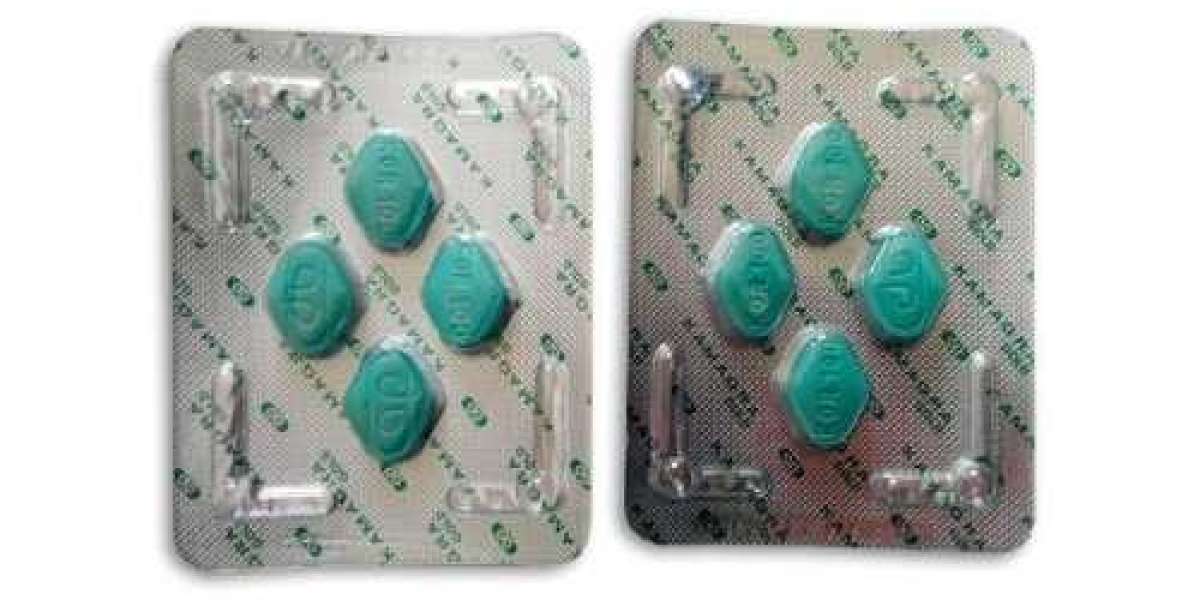Story at-a-glance
- Indigenous to Africa and other hot climates, baobab fruit has been used as a food and medicine for millennia and contains many highly nutritious vitamins and minerals
- Vitamin C in baobab powder helps your body with normal energy release, improved immune function and healthy, glowing skin, and the high fiber content acts as a prebiotic, helping to maintain optimal gut bacteria
- Two-thirds of the fiber in baobab powder is soluble and the other third is insoluble, making it a powerful and highly bioavailable prebiotic so your body can absorb and make use of the nutrients more quickly and easily
- Having fed and healed vast populations for centuries, the West is now discovering the many advantageous nutrients that are contained in this ancient, citrus-flavored fruit, most often ground into powder for easy addition to food
By Dr. Mercola
If you should visit the markets across the African continent, you’d find an interesting looking fruit harvested from the baobab tree (pronounced bay’-oh-bahb, emphasizing the first syllable) has earned not just popularity in its native regions but superfood status worldwide. A member of the silk-cotton family (Adansonia digitata), the baobab tree typically reaches as high as 90 feet and 60 feet wide, with a broad trunk.
Merriam-Webster dictionary1 notes that it’s native to Africa and bears an edible, acidic, hanging fruit resembling a gourd and weighing about 3 pounds. Madagascar, the Middle East and Australia have trees related to the baobab, and they’re all incredibly resilient and long-lived, surviving up to 500 years. The bark has been (and still is) used to make cloth, rope, clothing and paper, but every part of the baobab tree has been utilized. The fruit has also been used as a natural preservative, according to Medical News Today.2
This is the only fruit in the world that dries naturally on the branch after baking in the sun for six months. Then, the large, brittle, teardrop-shaped baobab fruits (or shells) are “wild-harvested” in a process that involves splitting them open with a hammer or large knife to reveal a dry, cream-colored pulp surrounded by (but separated from) the seeds, which sound like a rattle when they’re ready for harvest. Pounding the pulp into a fine powder using pestles and mortars is the final step of a rather labor-intensive process.
According to The Guardian, baobab fruit contains high levels ofantioxidants, potassium and phosphorus, along with high levels of vitamin C, calcium and fiber.3 Besides commodity marketing in areas of gin and beauty products, baobab fruit, described as having a sherbet-like taste, has been diversified to make baobab yogurt, salads, smoothies, cereals, granola bars and butter, the latter being used for things like pan-frying wild-caught Alaskan salmon and flavoring baobab popcorn.
However, for manufacturing purposes, the powdered pulp is often packaged and transported to grocery stores and outlets all over the world. Some are sterilized and otherwise processed, but you may be able to find the raw, natural powder in some supermarkets.
Health Benefits of Baobab Powder
As the source of traditional medicine, the leaves and fruit pulp have been made into medicines to reduce fever, stimulate immune system function and treat malaria, tuberculosis, microbial infections, toothaches, dysentery, diarrhea and anemia. According to Medical News Today, the baobab’s most prominent nutrients include:4
Vitamin C — 10 times more than oranges5 | Potassium — Four times more than bananas |
Phosphorus | Fiber — 10 times more than apples |
Calcium — Twice that of milk | |
Zinc | Thiamine |
Magnesium — five times more than avocadoes | |
Iron | Manganese |
Organic Facts made an astute observation: “There are certain anti-inflammatory compounds found in baobab that can help aid in a number of conditions, from injuries, aches, and pains to stomach upset and respiratory conditions. By reducing inflammation in the body, your immune system can focus on more important tasks, like eradicating pathogens and foreign bodies.”6
Besides lowering your blood pressure, and as a result fighting strokes, heart attacks, atherosclerosis and other heart-related complications, baobab fruit can increase your bone strength with the calcium and magnesium, improve your circulatory health due to the iron content and improve the bacteria levels in your gut through the high amounts of fiber.
Dramatic Health Benefits of Baobab Powder
Rich in vitamin C, experiments with baobab pulp have convinced experts that it has antimicrobial, antiviral, antioxidant, antidiarrheal and anti-inflammatory properties. One of the benefits is that helps to balance your body’s pH levels. Aduna.com, an Africa-inspired health food brand, notes:
“Baobab is considered to be one of the highest alkaline foods available as it has a PRAL (Potential Renal Acid Load) rating of -52 … The Journal of Environmental Health (2012) found that alkaline foods can also help defend our bodies from chronic diseases and ailments (such as hypertension, arthritis and deficiency in vitamin D).”7
•Fiber — According to Aduna.com, the nutrients in baobab powder include fiber, two-thirds of which is soluble, and insoluble makes up the rest, which makes it a powerful prebiotic. It’s also highly bioavailable so your body can absorb and make use of the nutrients much more quickly and easily.
Baobab powder is made up of nearly 50 percent fiber for improved digestive health; it’s estimated that 80 percent of people in the U.K. do not consume enough fiber. Fiber helps slow the release of sugar into your bloodstream to reduce energy spikes and control blood glucose levels
•Antioxidants — Among the best health benefits of baobab powder are the antioxidants — more, in fact, than any other whole fruit; gram per gram, it has twice the antioxidants of goji berries and more than blueberries and pomegranates combined.
One of the visible benefits is clear, glowing skin and reduced wrinkling, as the vitamin C and additional antioxidant combination results in the formation of collagen, but in terms of boosting your immunity, antioxidants are known for their free radical-neutralizing properties, which helps ward off all kinds of disease.
•Vitamin C — Pregnant moms are usually prescribed 85 milligrams of this vitamin daily as it helps produce collagen, fights infection, protects cells, encourages healthy waste removal, combats fatigue and plays an important role in the baby’s bone and organ development and structure. Also, as a pre- and post-workout boost, increased “C” negates oxidative damage to cells and muscle tissues.8
This flu-fighting nutrient also provides slow energy release over time to reduce fatigue and support your metabolism, and increased intake may help remedy one of the world’s most common disorders: iron deficiency.
•Iron — More than 30 percent of the world’s population suffer from an iron deficiency, and most are completely unaware — they just know they feel tired and “run down.” Vitamin C helps your body absorb iron, so pairing iron with vitamin C helps increase absorption and helps you feel more energetic. Aduna.com also notes:
“Our bodies require two types of iron; heme iron (found in fish, poultry and red meat) and (non-heme) iron (present in plant foods, eggs, milk and meat). Compared to the former, (non-heme) iron is not easily absorbed by the body. One of the ways in which absorption of both types of iron can be increased is by combining the consumption of iron with vitamin C.”
•Blood sugar — Clinical trials at Oxford University showed that participants drinking milk with baobab powder added “significantly reduced” sugar absorption into the blood after digestion, which is one reason why baobab is considered beneficial for people on a low GI (glycemic index) diet and may also be helpful for people with Type 2 diabetes.9
Last but Not Least, and a Baobab-Inspired Recipe
Baobab leaves should be stored as whole leaves rather than ground leaf powder in order to preserve the high vitamin content. They’re sometimes harvested for their essential oils and these, too, are beneficial for your skin when used topically.
Better Nutrition10 notes a recent animal study, which found that freeze-dried baobab fruit and seeds are liver protective against the damage caused by a toxic solvent used in fire extinguishers and dry cleaning. This Tropical Baobab Smoothie recipe is very straightforward and nutritious, inspired by a similar recipe in National Geographic:11
Tropical Baobab Smoothie
Ingredients:
- 2 cups frozen chopped banana
- 1 cup chopped fresh pineapple
- 2 cups coconut milk
- 4 cups Baobab Fruit Drink (recipe below)
- 1/2 cup raw cashews (optional)
Instructions:
Combine all the ingredients in a blender and purée until smooth and creamy. Serve immediately.
Baobab Fruit Drink
Tropical and creamy, this is a traditional drink made from rehydrated baobab fruit pulp.
Ingredients:
- 2 1/2 cups baobab fruit pulp
- 5 cups warm water
- 2 teaspoons powdered stevia
Instructions:
In a large bowl, combine all the ingredients and stir well until the water becomes white and thick. Strain the juice into a pitcher through a fine-mesh sieve lined with damp cheesecloth. Serve chilled. Serves four.
There are a few potential problems with the growing popularity of baobab fruit, however. While the hard shell resembles a coconut, and people in the U.S. are familiar with the many ways it can be used, the baobab, even in this fast-moving technological age, is somewhat of an unknown quantity. One company producing African products noted, “It’s hard to sell to a western customer because of how it looks — we have no frame of reference.”12 But as The Guardian puts it:
“There are concerns that if it takes off internationally, the baobab would become tantamount to a crop, which could threaten it as a local resource and a key part of local diets and medicines.
Failure to regulate the harvest and export, and over-farming could also affect the tree’s biodiversity. The hope is that if farmers are able to regulate in the same way the coffee industry has attempted to, it could be a boon to the African market. Until then, it is best used with care and consideration for its sourcing.”13














